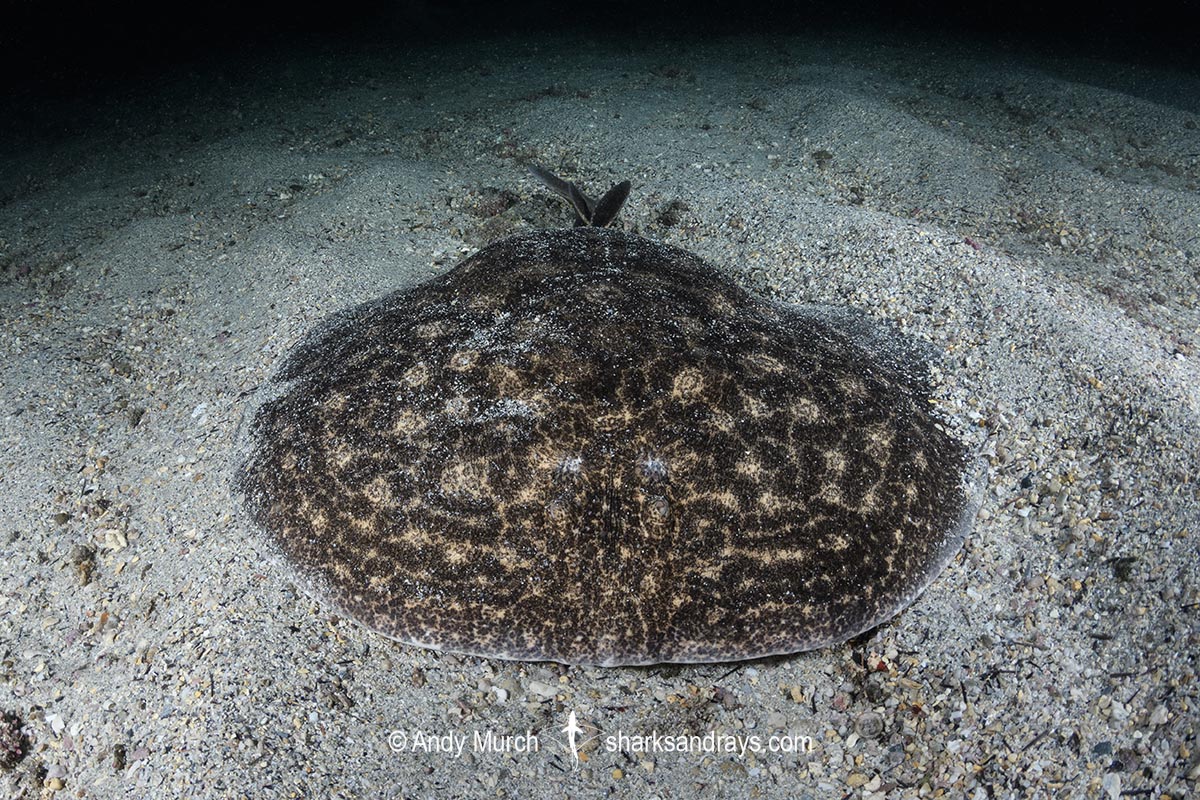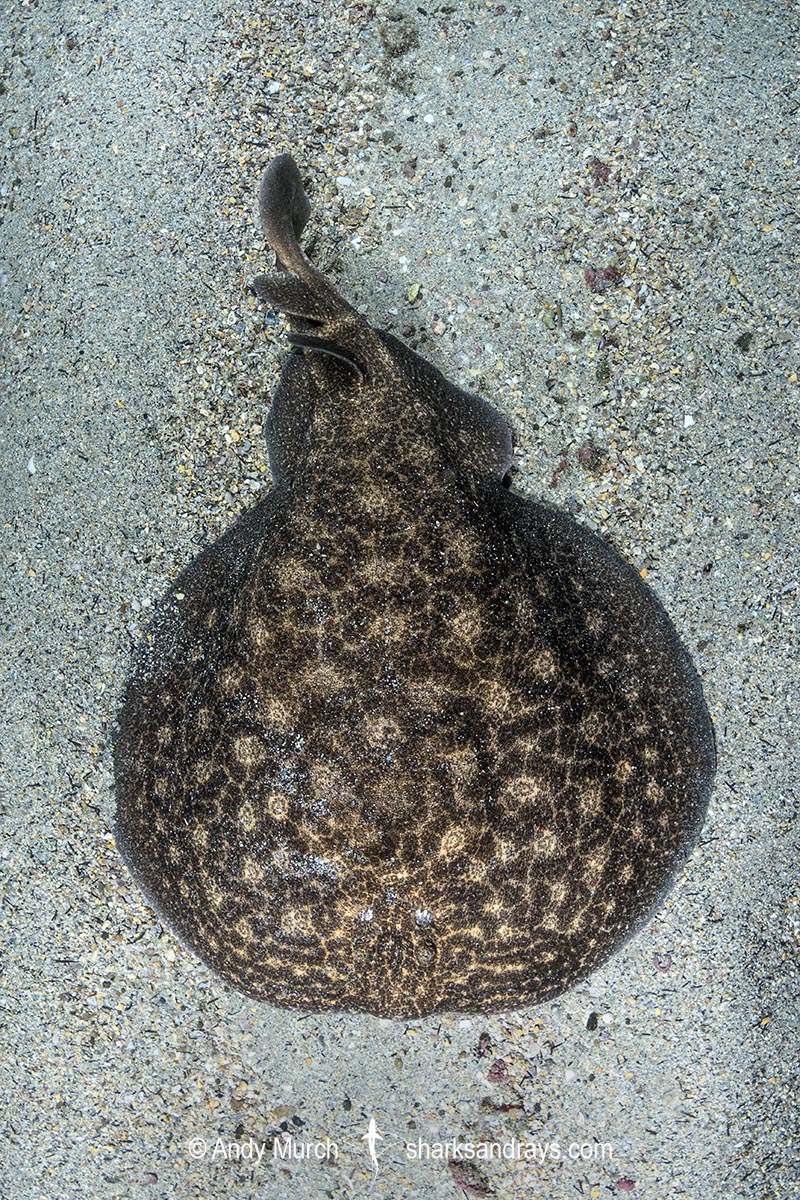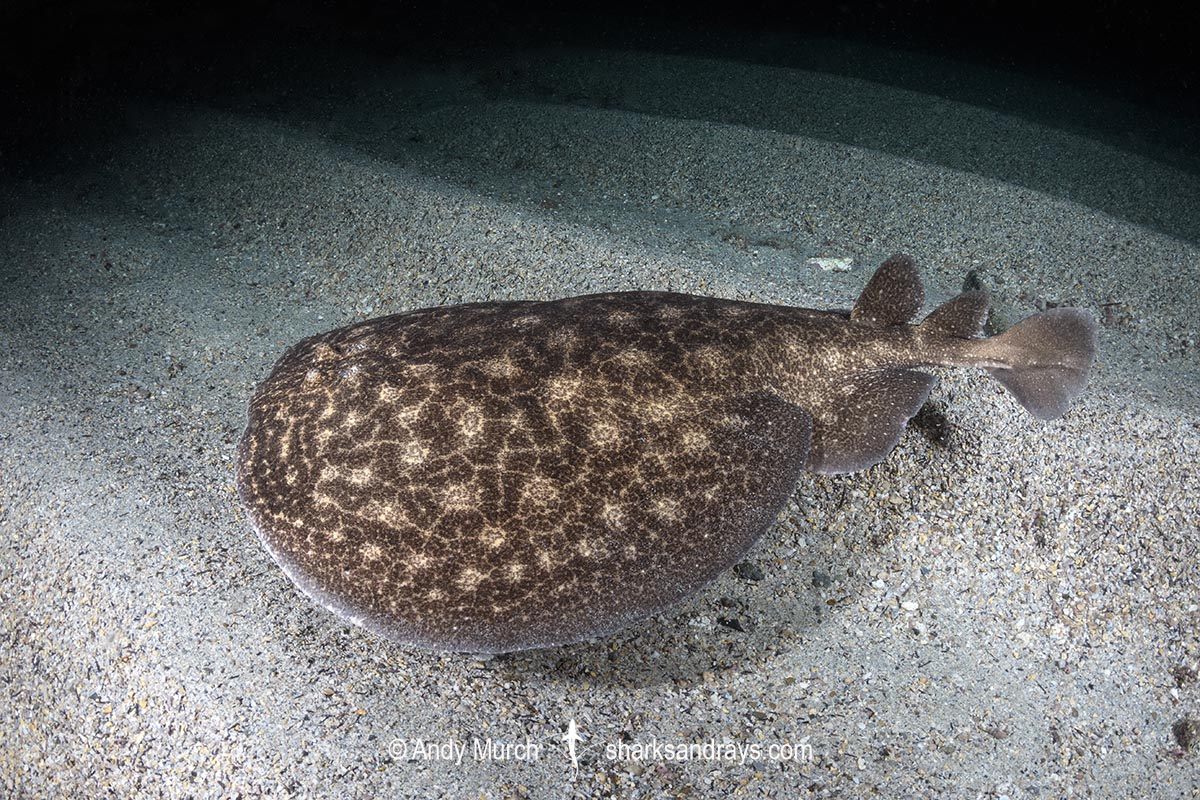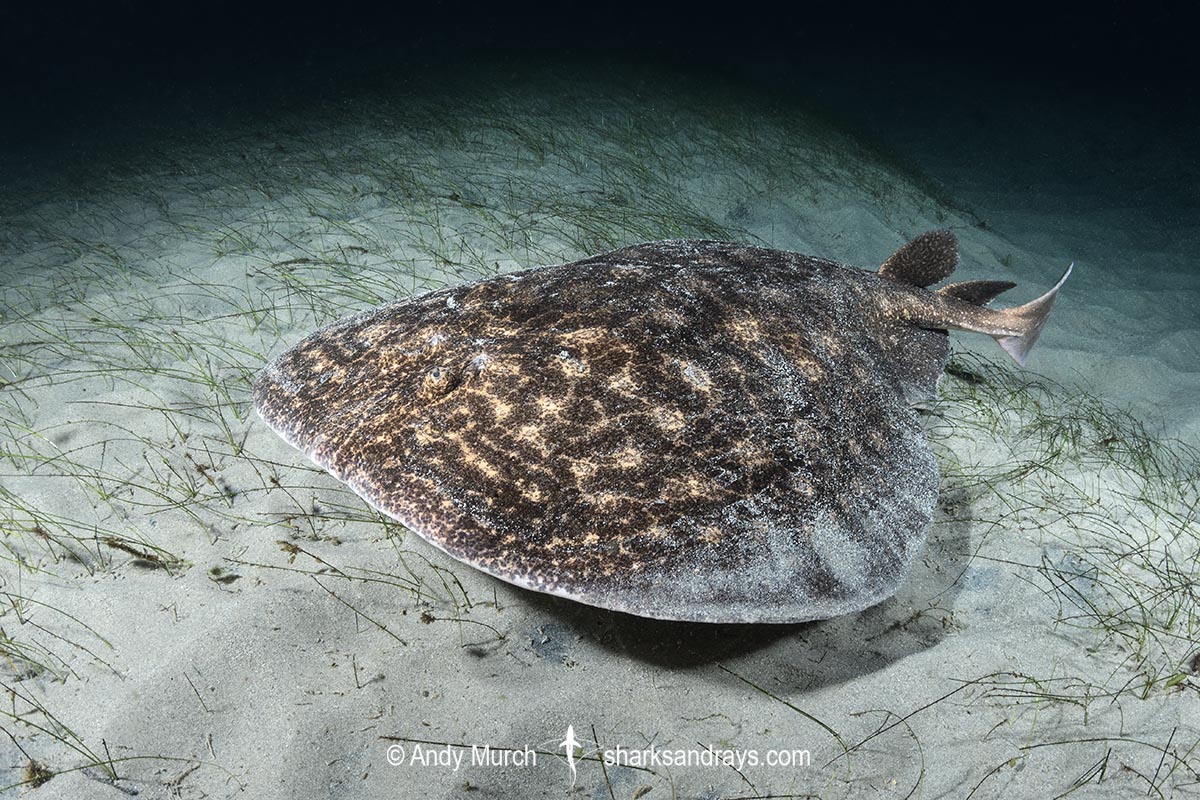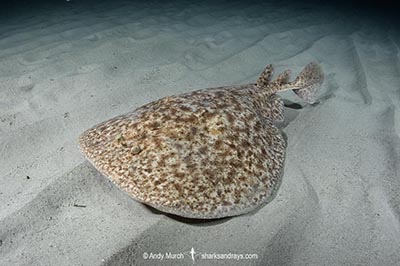Common names
Rosette Torpedo Ray.
Binomial
Torpedo bauchotae.
Synonyms
None.
Identification
A medium-sized torpedo ray with an extremely thick circular disc of equal length and width. Snout vert short. Anterior margin of disc broadly rounded to almost straight, with a weak central bulge. Eyes protruding; slightly larger than spiracles. Eyes and spiracles closely separated. Spiracles rounded with 9-11 small pointed papillae. Mouth arched. Nostrils with prominent nasal flaps. Electric organs more visible ventrally.
Pelvic fins relatively broad, with convex posterior margins. Tail short and robust with a well developed lateral skin fold. Dorsal fins closely separated. First dorsal fin tall with narrowly rounded apex and sloped posterior margin. First dorsal origin over pelvic fin insertion. Second dorsal fin slightly lower and more slanted with an evenly rounded apex. Caudal fin large, sub-triangular, apices narrowly rounded, posterior margin slightly convex.
Colour
Dorsum reddish brown to dark brown with many large golden rosette-like ragged-edged spots and irregular interconnecting lines. Spots much smaller towards disc margin and on dorsal and caudal fins. Ventrum creamy white.
Size
Maximum length ~60cm.

Conservation Status
ENDANGERED
Although catch data is limited, the rosette torpedo ray is probably caught in bottom trawl, longline, and net fisheries across its range. With little economic value, the rosette torpedo is released throughout much of its range but is retained in some areas such as Senegal. Post release survivorship is probably high, but overall declines of 50-79% over the last three generations are suspected.

Habitat
Sub-temperate to tropical seas. Benthic on soft sandy substrates, sometimes adjacent to rocky reefs. From shallow bays to 60m.
Distribution
Eastern Atlantic. Senegal to Angola. Absent from Cape Verde Archipelago and São Tomé and Príncipe.
Reproduction
Poorly known but aplacental viviparous like other torpedo rays.
Diet
Probably small benthic invertebrates and fishes.
Behavior
The rosette torpedo ray is nocturnal; remaining buried under sand during the day. Actively swims over the seabed in search of prey during the night.
Reaction to divers
Easy to approach but tends to start swimming away if uncovered or harassed. Eventually bolts or tries to re-bury if approached too aggressively. May try to shock divers when threatened.
Diving logistics
There is a small population of Rosette Torpedo Rays in N’gor Bay in Senegal. I have also seen this ray in deeper water at a dive site called Meoune, which is accessible from Dakar.
What’s new
View our full list of updates
Similar species
Marbled Torpedo (Torpedo marmorata) Distinguished by reticulated pattern and concave anterior disc margin.

